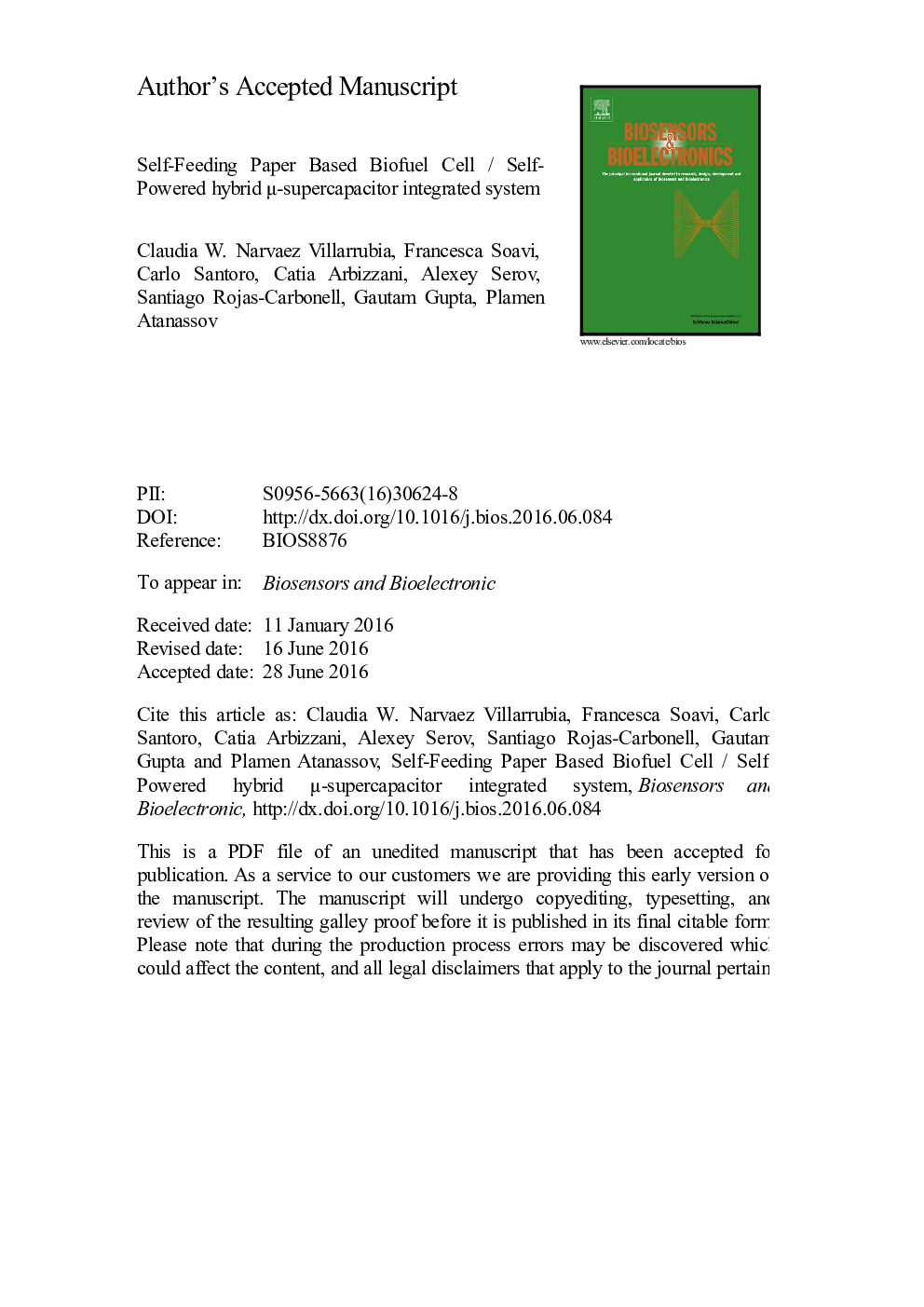| Article ID | Journal | Published Year | Pages | File Type |
|---|---|---|---|---|
| 7230201 | Biosensors and Bioelectronics | 2016 | 27 Pages |
Abstract
For the first time, a paper based enzymatic fuel cell is used as self-recharged supercapacitor. In this supercapacitive enzymatic fuel cell (SC-EFC), the supercapacitive features of the electrodes are exploited to demonstrate high power output under pulse operation. Glucose dehydrogenase-based anode and bilirubin oxidase-based cathode were assembled to a quasi-2D capillary-driven microfluidic system. Capillary flow guarantees the continuous supply of glucose, cofactor and electrolytes to the anodic enzyme and the gas-diffusional cathode design provides the passive supply of oxygen to the catalytic layer of the electrode. The paper-based cell was self-recharged under rest and discharged by high current pulses up to 4Â mAÂ cmâ2. The supercapacitive behavior and low equivalent series resistance of the cell permitted to achieve up to a maximum power of 0.87Â mWÂ cmâ2 (10.6Â mW) for pulses of 0.01Â s at 4Â mAÂ cmâ2. This operation mode allowed the system to achieve at least one order of magnitude higher current/power generation compared to the steady state operation.
Keywords
Related Topics
Physical Sciences and Engineering
Chemistry
Analytical Chemistry
Authors
Claudia W. Narvaez Villarrubia, Francesca Soavi, Carlo Santoro, Catia Arbizzani, Alexey Serov, Santiago Rojas-Carbonell, Gautam Gupta, Plamen Atanassov,
